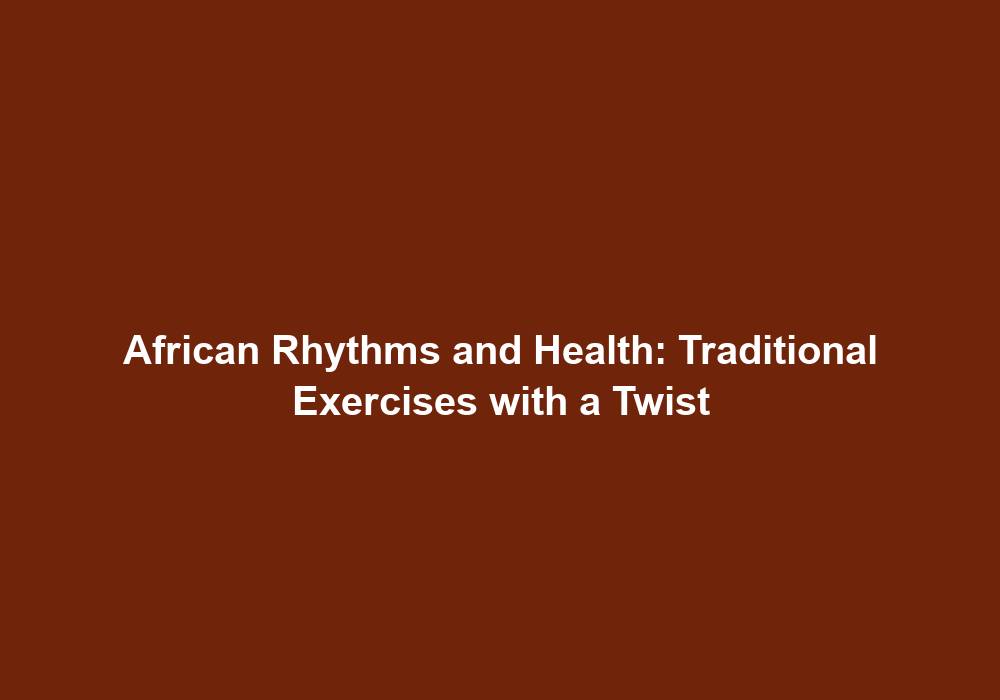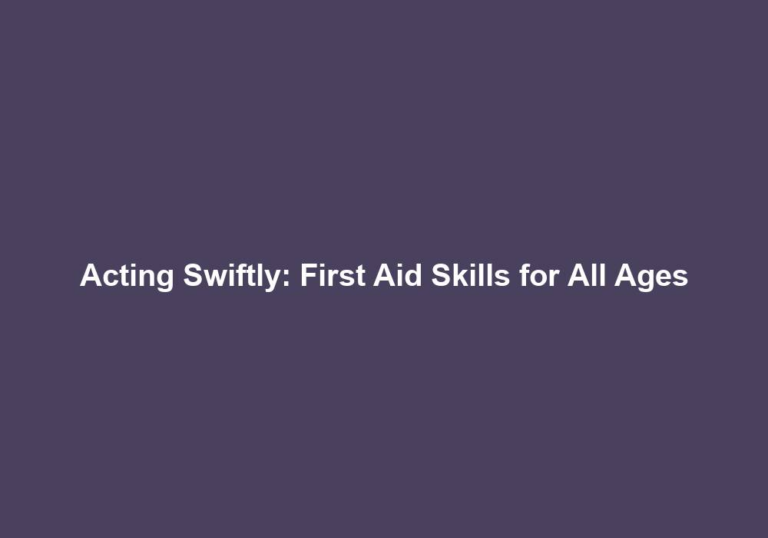African Rhythms and Health: Traditional Exercises with a Twist
Africa is a continent rich in cultural diversity, and its traditional exercises offer a unique and exciting way to improve both physical and mental well-being. These rhythmic movements not only promote physical fitness but also serve as a form of self-expression and celebration of African heritage. In this article, we will explore the various traditional exercises originating from different regions of Africa and their significant impact on overall health.
1. Introduction to African Rhythms and Exercise
African rhythms have long been an integral part of the continent’s rich history and culture. Traditional exercises often incorporate these rhythmic movements, combining dance, music, and fitness to create a holistic approach to well-being. These exercises are deeply rooted in African traditions and serve as an important means of communication, storytelling, and community bonding.
The incorporation of African rhythms in exercise provides a unique and dynamic way to engage the body, mind, and spirit. By blending dance, music, and fitness, traditional African exercises offer a holistic approach to well-being. These exercises not only promote physical fitness but also serve as a means of self-expression and celebration of African heritage. They are deeply rooted in African traditions and play a crucial role in communication, storytelling, and community bonding.
2. Traditional African Dance as an Exercise Form
Traditional African dance forms are a dynamic way to engage the body, mind, and spirit. These dances are often performed in groups, promoting unity and communal harmony. They involve rhythmic footwork, hip movements, and arm gestures, all synchronized with the beat of African drums and other traditional instruments.
Benefits of Traditional African Dance:
-
Aerobic Fitness: The energetic and repetitive movements of traditional African dance contribute to improved cardiovascular health, endurance, and stamina. The combination of rhythmic footwork, hip movements, and arm gestures provides a full-body workout, increasing heart rate and promoting aerobic fitness.
-
Muscle Strength and Toning: The various dance moves engage multiple muscle groups, leading to enhanced strength, flexibility, and overall body toning. The dynamic and often acrobatic nature of traditional African dance requires the use of core muscles, leg muscles, and upper body strength, resulting in improved muscle tone and definition.
-
Balance and Coordination: Traditional African dance requires precise footwork and coordination with the rhythm, thereby improving balance and body control. The intricate movements and coordination required in African dance help develop proprioception and spatial awareness, leading to improved balance and overall body coordination.
-
Stress Relief and Mental Well-being: Engaging in rhythmic movements and expressing oneself through dance can be a cathartic experience, reducing stress levels and promoting mental well-being. The combination of music, movement, and self-expression in traditional African dance creates a sense of joy and release, helping to alleviate stress and improve emotional well-being.
3. Capoeira: The Brazilian-African Fusion
Capoeira is a unique martial art that originated in Brazil but has deep roots in African culture. It combines elements of dance, acrobatics, and music, making it a highly engaging and physically demanding exercise form. Capoeira is often practiced in a circle called a roda, with participants taking turns to showcase their skills while others provide the musical accompaniment.
Benefits of Capoeira:
-
Full-Body Workout: Capoeira involves a wide range of movements, including kicks, spins, and ground-based acrobatics, leading to a comprehensive full-body workout. The combination of dance-like movements, acrobatics, and self-defense techniques in Capoeira engages all major muscle groups, providing a well-rounded workout.
-
Flexibility and Agility: The fluid and dynamic nature of Capoeira improve flexibility, agility, and overall body coordination. The constant movement, kicks, and spins in Capoeira require a high level of flexibility and range of motion, resulting in improved overall body flexibility and agility.
-
Self-Defense Skills: Capoeira incorporates self-defense techniques, providing practical skills for personal safety. The acrobatic movements and strikes in Capoeira are not only visually impressive but also serve as effective self-defense techniques, equipping practitioners with the skills to protect themselves if needed.
-
Cultural Awareness: Practicing Capoeira allows individuals to connect with African and Brazilian heritage, fostering cultural appreciation and understanding. Capoeira is deeply rooted in African traditions brought to Brazil by enslaved Africans, and by practicing this art form, individuals gain a deeper understanding and appreciation for African and Brazilian culture.
4. Kalari Payattu: The Ancient Art of Kerala
Kalari Payattu is an ancient martial art form from the southern Indian state of Kerala. While it primarily focuses on combat training, it also encompasses various exercises and movements that promote overall fitness and well-being. This traditional practice involves a combination of physical training, dance-like movements, and meditation.
Benefits of Kalari Payattu:
-
Strength and Conditioning: The rigorous training in Kalari Payattu enhances strength, endurance, and physical stamina. The various movements, strikes, and postures in Kalari Payattu require a high level of physical fitness, resulting in improved overall strength and conditioning.
-
Body Flexibility: The intricate movements and postures in Kalari Payattu improve joint flexibility and overall body range of motion. Flexibility is a key component of Kalari Payattu, as it allows practitioners to perform the various strikes, kicks, and defensive movements with precision and ease.
-
Mental Focus and Discipline: The art form requires intense concentration and discipline, leading to improved mental focus and clarity. Kalari Payattu demands a high level of mental focus and concentration, as practitioners must be fully present and aware of their movements and surroundings.
-
Self-Defense Skills: Kalari Payattu equips practitioners with effective self-defense techniques, enhancing personal safety. The combat training aspect of Kalari Payattu teaches practitioners how to defend themselves in real-life situations, providing them with practical self-defense skills.
5. Conclusion
Traditional African exercises, such as dance and martial arts, offer a refreshing and unique approach to physical fitness and overall well-being. These practices not only provide excellent physical benefits but also celebrate African heritage, foster cultural appreciation, and promote unity within communities. Engaging in African rhythms and exercises is a wonderful way to embrace diversity, improve fitness, and enhance mental and emotional health. By incorporating traditional African exercises into our fitness routines, we not only improve our physical health but also connect with the rich cultural heritage of Africa and promote unity and harmony within our communities.
Note: The above content is provided in markdown format, making it suitable for publishing on various platforms and websites.







